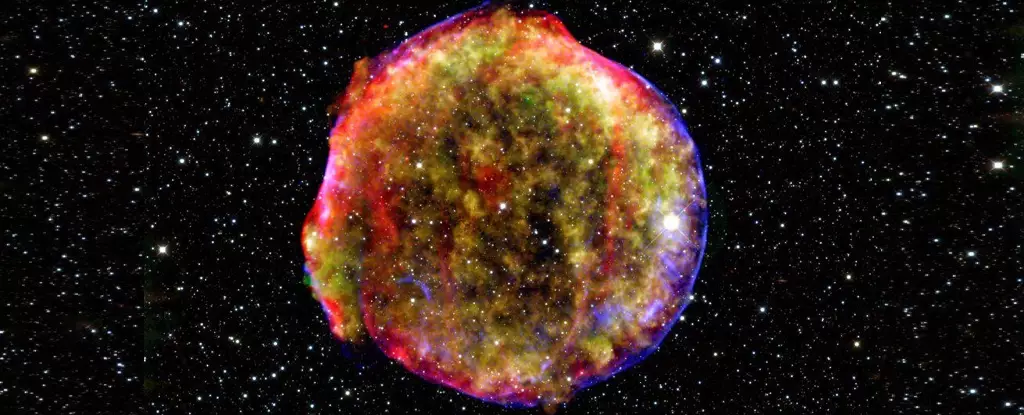In the vastness of our galaxy, atomic fragments zip through space at near-light speeds, tantalizing scientists with their hidden origins. For over a century, these cosmic rays have posed an enigma. While the explosive deaths of stars, specifically supernovae, have long been suspected to produce these highly energetic particles, skepticism persists among researchers. Conventional wisdom and numerical simulations are pitted against age-old theories, as the cosmic dance between fact and assumption unfolds. Is it possible that supernovae truly are the engines of particle acceleration at extraordinary energy levels? The complexities of this question may reveal more than a mere astrophysical phenomenon; they might also illuminate the nature of how we approach scientific inquiry itself.
Supernovae: Natural Accelerators or Just a Theory?
The mysterious and captivating nature of supernovae has inspired researchers for decades. Tycho’s star, a significant celestial landmark located a few thousand light-years away, presents a compelling case for those championing the role of dying stars as cosmic accelerators. This brilliant explosion, first recorded in 1572, is a stark reminder of the universe’s unpredictable forces. Yet, while it certainly dazzles, recent studies reveal a troubling reality: the magnetic fields generated during such catastrophic events may fall short of their expected power, thereby questioning their efficacy as accelerators for cosmic rays.
The notion that a collapsing star could emerge as the Universe’s most ferocious accelerator invites both awe and skepticism. The obstacles that researchers face are immense, reminiscent of navigating a turbulent ocean of magnetic fields in search of the proverbial needle in a haystack. Scientific inquiry seems reliant on assumptions built upon centuries of observation. Yet, the latest findings suggest that the constants of these cosmic phenomena remain elusive, challenging us to reconsider our understanding of the universe.
The Dance of Particles: Timing and Turbulence
The recent analysis by a collaborative team of physicists highlights not just the potential of supernovae but also the critical nature of timing and environmental conditions. The study suggests that only actively collapsing stars in certain stages may be capable of generating the requisite turbulence to propel particles to the extreme energies required for classification as PeVatrons. This relationship between dying stars, their surrounding environments, and the generation of cosmic rays taps into deeper questions of scientific rigor. It prompts us to examine the very frameworks we use to grasp these celestial phenomena.
For instance, the requisite conditions for particle acceleration may be fleeting. If the surrounding shell of a dying star doesn’t retain its density shortly after the explosion, the opportunities for discovering PeV-level cosmic rays may elude researchers. This uncertainty points toward the inherent limitations of our understanding — both in astrophysics and in the broader scientific community. Are we clinging too tightly to past beliefs? Should we rethink the criteria that guide our inquiries? In the shadow of these powerful cosmic events, we may find both caution and inspiration.
Understanding the PeVatrons and Future Implications
The theoretical framework surrounding PeVatrons presents a captivating yet frustrating picture of the cosmic order. While dying stars might be the missing piece in understanding high-energy cosmic rays, the nuances of particle acceleration are far more complicated than initially perceived. The implications of confirming the supernova theory as the progenitor of these cosmic entities extend beyond mere astrophysics, provoking inquiries into the realms of existence, energy, and entropy.
As we look to the future, the prospect of witnessing another supernova within our galactic neighborhood raises both excitement and tension among the scientific community. It presents an opportunity not just to gather data but also to reinforce or challenge existing paradigms. Will the next cosmic explosion reveal the powerful secrets of high-energy particles, or will it leave us grappling with even more profound uncertainties? The universe continues to be a formidable teacher, whispering its secrets through the chaos of cosmic events, daring us to look closer and think bolder.
In exploring the complexities of cosmic rays and their lifeblood, the supernova, it becomes evident that embracing uncertainty and curiosity could hold the keys to unlocking the universe’s most treasured mysteries.

